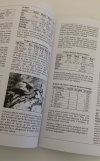Toadmaster
Legendary Pubber
- Joined
- Oct 24, 2018
- Messages
- 3,577
- Reaction score
- 8,988
I can't find a thread covering this, but I know we have some members with experience in this area. The past couple of years I've developed a lot of interest in writing, some game related some not. Wide variety of subjects from historical, to game rules / supplemental material and even a few short stories.
Trying to figure out how to make the leap to actually putting stuff out there for consumption. Problem I face is I don't even know what all I should be asking.
I use MS Word, should I be considering another program, or is Word sufficient.
Curious about working within an established open source game frame work like Chaosium's Miskatonic Repository vs going on your own when the material is game adjacent but not rule specific.
A lot of the stuff I've been working on is technology related, so would be of interest to Call of Cthulhu players, but could equally apply to any games set within the periods covered (mostly 1850-1950). Obviously having your stuff as part of a games 3rd party space should provide more views, but surely there are trade offs and possibly ways to still have your stuff suggested when people look at the appropriate kinds of games without going this route.
Feel free to use this thread as an open discussion related to the topic, a place to add advice, encouragement, discouragement and experiences you've had or ask questions of your own.
Trying to figure out how to make the leap to actually putting stuff out there for consumption. Problem I face is I don't even know what all I should be asking.
I use MS Word, should I be considering another program, or is Word sufficient.
Curious about working within an established open source game frame work like Chaosium's Miskatonic Repository vs going on your own when the material is game adjacent but not rule specific.
A lot of the stuff I've been working on is technology related, so would be of interest to Call of Cthulhu players, but could equally apply to any games set within the periods covered (mostly 1850-1950). Obviously having your stuff as part of a games 3rd party space should provide more views, but surely there are trade offs and possibly ways to still have your stuff suggested when people look at the appropriate kinds of games without going this route.
Feel free to use this thread as an open discussion related to the topic, a place to add advice, encouragement, discouragement and experiences you've had or ask questions of your own.




 ). I dreamed of having access to something like that but didn't have a word processing program and printer until maybe 1995 or 1996.
). I dreamed of having access to something like that but didn't have a word processing program and printer until maybe 1995 or 1996.
